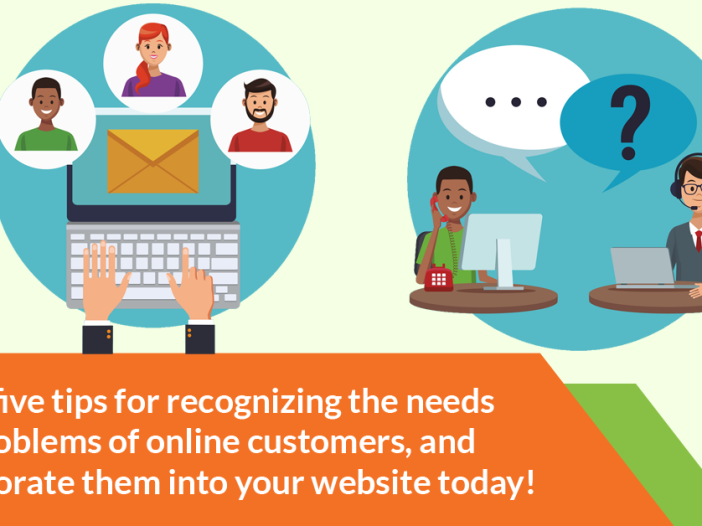
Internet users are most often looking to answer a question or gain information, and businesses will benefit when they can understand what questions or goals their customers have.
Take a look at these five tips for recognizing the needs and problems of online customers, and incorporate them into your website today!
- Utilize customer surveys.
Surveys have long been the clearest way to get customer feedback, and this doesn’t change with online customers. You can offer questions directly on your website through embedded surveys, which are available on most online website hosting platforms; formulate the questions to understand any issues that customers are having or what problems they are trying to solve.
- Offer a link to a live agent.
Although online customers appreciate the convenience of being able to conduct purchases through your website, when it comes to understanding an issue or problem, often it is beneficial to allow customers to connect to a live customer service representative. A study by Genesys [ http://www.slideshare.net/fred.zimny/the-cost-of-poor-customer-service-the-economic-impact-of-customer-experience-in-the-us ] found that customer satisfaction with a live agent was over 70 percent, as compared to less than 10 percent satisfaction with self-service online.
- Use your website’s page statistics.
User statistics, as viewed through a source such as Google Analytics [ https://www.google.com/analytics/ ], can help you understand which pages on your website receive the most traffic, how long the average user stay is, and which pages users have trouble with.
You can see what your users click and how effective each of your pages is; knowing this can help you understand how to help your online customers.
- Take advantage of social media.
The clearest way to know what a customer wants is to ask them – and social media allows you to do just that.
Using your company’s Facebook or Twitter account, you can ask questions directly to your customers, and they can respond with direct feedback. You can also track customers’ usage of your company’s name or tag on social media and understand the context in which it is used in order to know what your customers desire.
- Formulate a customer relationship management (CRM) strategy.
Customer relationship management (CRM) is a system for integrating all aspects of your business, including sales, promotion, and customer relations, to improve your customer service overall. This system incorporates technology to make a customer-oriented program; you can use numerous vendors, which will typically conduct research to understand the needs and problems of your customers.
Recommended Reading: 5 Reasons Your Potential Customers Aren’t Buying From You
